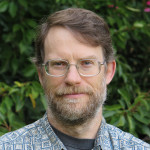 The projects of twelve Biosciences Area scientists and engineers received funding through the FY2016 Laboratory Directed Research and Development (LDRD) program. These projects cover a broad range of topics, including energy science technology applications, novel computing technologies, and mechanistic understanding of multi-scale interactions among molecules, microbes, plants, metazoans, the abiotic environment, and their feedbacks. Together, these efforts account for 14.5% of the $25.3 million allocated. Lab-wide, 84 proposals were selected from a field of 179.
The projects of twelve Biosciences Area scientists and engineers received funding through the FY2016 Laboratory Directed Research and Development (LDRD) program. These projects cover a broad range of topics, including energy science technology applications, novel computing technologies, and mechanistic understanding of multi-scale interactions among molecules, microbes, plants, metazoans, the abiotic environment, and their feedbacks. Together, these efforts account for 14.5% of the $25.3 million allocated. Lab-wide, 84 proposals were selected from a field of 179.
The Area’s crop of research endeavors range from studies of femtoscale phenomena to building macroscale components for manipulating microscopic processes. Five of these projects will be spearheaded by Molecular Biophysics & Integrated Bioimaging (MBIB) investigators. Anchoring the small end of this scale are two proje cts that focus on energy conversion on sub-molecular and molecular levels. Two new projects will be led by Karen Davies (left), staff scientist, who will be designing efficient energy conversion pathways for synthetic
cts that focus on energy conversion on sub-molecular and molecular levels. Two new projects will be led by Karen Davies (left), staff scientist, who will be designing efficient energy conversion pathways for synthetic  organisms. Heinz Frei (right), senior scientist, will be working to develop robust synthetic membranes for microbial electrocatalysis that will separate electron-generating organisms from the catalytic reaction environment. In
organisms. Heinz Frei (right), senior scientist, will be working to develop robust synthetic membranes for microbial electrocatalysis that will separate electron-generating organisms from the catalytic reaction environment. In  preparation for the ALS upgrade, Greg Hura will be developing life science applications of X-ray scattering when the improvements are online.
preparation for the ALS upgrade, Greg Hura will be developing life science applications of X-ray scattering when the improvements are online.
There were two continuing proposals, one by Michelle Chang (right), biological faculty  engineer, which involves interfacing chemical and biological catalysis for solar-to-fuel conversion.
engineer, which involves interfacing chemical and biological catalysis for solar-to-fuel conversion.  MBIB Interim Division Director Paul Adams (left) received support for the development of advanced computational tools for high-resolution cryo-electron microscopy. Determining the structures of subcellular and cellular components will help scientists answer questions in the realms of energy, environment, and health using structural information.
MBIB Interim Division Director Paul Adams (left) received support for the development of advanced computational tools for high-resolution cryo-electron microscopy. Determining the structures of subcellular and cellular components will help scientists answer questions in the realms of energy, environment, and health using structural information.
Researchers at the Joint Genome Institute (JGI) and in the Environmental Genomics & System Biology (EGSB) Division will be studying a variety of microbial pathways and signals, the majority with ties to theme of the Lab-wide initiative, Microbes to Biomes. Matt Blow (right), Functional  Genomics, will focus on the discovery and transfer of novel pathways for phosphate solubilization, particularly plant-root associated bacteria. Cyclic dipeptides (CDPs), which will be identified, biomanufactured, and characterized by Sam Deutsch (left), Synthetic Biology, are an important and diverse family
Genomics, will focus on the discovery and transfer of novel pathways for phosphate solubilization, particularly plant-root associated bacteria. Cyclic dipeptides (CDPs), which will be identified, biomanufactured, and characterized by Sam Deutsch (left), Synthetic Biology, are an important and diverse family  of signaling molecules that are involved in mediating microbial interactions. Two projects will be focusing on existing interactions between plants and microbes. John Vogel (right),
of signaling molecules that are involved in mediating microbial interactions. Two projects will be focusing on existing interactions between plants and microbes. John Vogel (right),  Plant Functional Genomics at JGI and EGSB Division Science Co-Deputy, will explore the signaling and mechanisms of plant-growth promoting microbes.
Plant Functional Genomics at JGI and EGSB Division Science Co-Deputy, will explore the signaling and mechanisms of plant-growth promoting microbes.  Tanja Woyke (left), JGI’s head of Microbial Programs, will use function-driven genomics to tackle microbial-mediated plant carbon decomposition.
Tanja Woyke (left), JGI’s head of Microbial Programs, will use function-driven genomics to tackle microbial-mediated plant carbon decomposition.
 Three additional projects will be led by investigators in the ESGB Division. Ben Brown (right), Molecular Eco-Systems Biology Department Head, will be reinventing pre-
Three additional projects will be led by investigators in the ESGB Division. Ben Brown (right), Molecular Eco-Systems Biology Department Head, will be reinventing pre- clinical and environmental testing paradigms and Ben Bowen (left) will be furthering high-performance chemical identification for hyperspectral data science.
clinical and environmental testing paradigms and Ben Bowen (left) will be furthering high-performance chemical identification for hyperspectral data science.  EGSB Division Science Co-Deputy Sue Celniker (right) continues her project to elucidate microbiome adaptation in response to environmental challenges, which is part of the Lab’s Microbes to Biomes Initiative. For more information about the Biosciences Area’s FY17 LDRD process, please see the announcement.
EGSB Division Science Co-Deputy Sue Celniker (right) continues her project to elucidate microbiome adaptation in response to environmental challenges, which is part of the Lab’s Microbes to Biomes Initiative. For more information about the Biosciences Area’s FY17 LDRD process, please see the announcement.




